|
 |
|
|
|
 |
|
 |
|
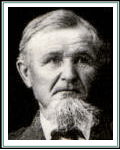 Although we always speak of our ancestors as having come from
Germany, in reality, that was only true for the last two years
before they left for America in 1873. Germany as we think
of it today did not exist as a
unified nation until 1871.
Prior to then, this area of Europe
consisted of a loose confederation of about 300 independent
dukedoms and principalities. Although we always speak of our ancestors as having come from
Germany, in reality, that was only true for the last two years
before they left for America in 1873. Germany as we think
of it today did not exist as a
unified nation until 1871.
Prior to then, this area of Europe
consisted of a loose confederation of about 300 independent
dukedoms and principalities.
One of these territories in the
northern region was called Mecklenburg-Schwerin. According to
the available church and municipal records, ancestors of our
branch of the Heiden family had lived in this
area at least as far back as the mid-1700's.
So far, we have traced the family tree back to a man named
Friedrich Heiden who was born in 1755. The Heiden line then
moves down four generations to
August Heiden
who, with his wife
and three children, emigrate to America and eventually end up
on farms in
Raisinville Township, Monroe County, Michigan.
August
now has several hundred direct descendents.
|
|
|
|
 |
|
 |
|
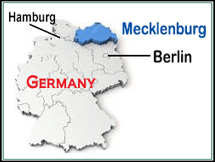 The
ancestors of the modern day family members were born
and raised in humble villages surrounded by farms
owned by a Duke or other elites of the day. They
lived in what was then called Mecklenburg-Schwerin. The
ancestors of the modern day family members were born
and raised in humble villages surrounded by farms
owned by a Duke or other elites of the day. They
lived in what was then called Mecklenburg-Schwerin.
After World War II,
this area was made part of the former East German
Democratic Republic but is now included in the
re-unified Germany and is called Mecklenburg-Vorpommern.
|
|
|
|
 |
|
 |
|
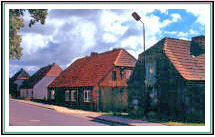 The Heidens and Rambows were
primarily farm
people who lived in tiny villages scattered a few miles apart
in an area about 30 miles from the port town of
Rostock on
the Baltic Sea. The main City of Güstrow was nearby and
Teterow was
the
"county seat" town. Güstrow has a current population about 30,000 while
Teterow
which was closer to the Heidens has a population of around 8,500. The Heidens and Rambows were
primarily farm
people who lived in tiny villages scattered a few miles apart
in an area about 30 miles from the port town of
Rostock on
the Baltic Sea. The main City of Güstrow was nearby and
Teterow was
the
"county seat" town. Güstrow has a current population about 30,000 while
Teterow
which was closer to the Heidens has a population of around 8,500.
August Heiden
grew up in the village of Gross Wokern or Groß Wokern which now has about 1,100
residents. Nearby villages such as
Mamerow,
Nienhagen, Neu
Wokern and others are within a few miles or less of each
other. It is easy to imagine villagers walking between towns to
visit friends, relatives or prospective mates. There is little doubt that,
in places this small, everyone knew everyone else at least to a
certain extent.
|
|
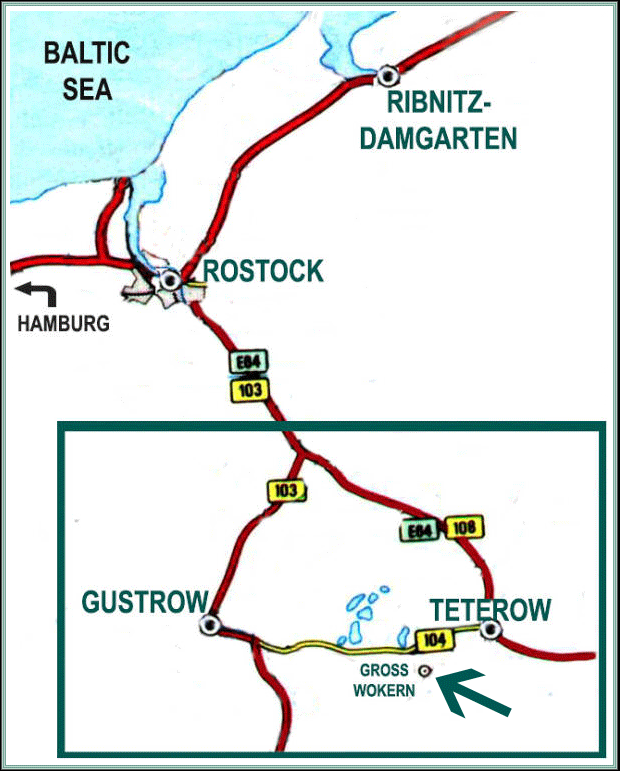 |
|
|
|
 |
|
 |
|
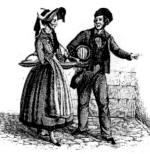 Life for the people who lived in this part of the country was,
obviously, quite different from what we experience now, over 150
years later. To help to understand the differences we have
included brief units about farm life,
houses,
burial customs,
marriage and
emigration patterns for the late 1800s including a
report about the Port of Hamburg. Life for the people who lived in this part of the country was,
obviously, quite different from what we experience now, over 150
years later. To help to understand the differences we have
included brief units about farm life,
houses,
burial customs,
marriage and
emigration patterns for the late 1800s including a
report about the Port of Hamburg.
|
|
|
|
 |
|
 |
|
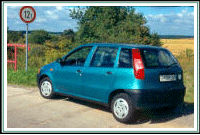 In
the summer of 1996, I took a trip to the northern part of
Germany to visit the area where our ancestor's lived. On the
speed-limit-less autobahn, it took no time to travel from
Rostock out to the area in question. It was easy to envision our
relatives living there with very little having changed in the
past century or so. In
the summer of 1996, I took a trip to the northern part of
Germany to visit the area where our ancestor's lived. On the
speed-limit-less autobahn, it took no time to travel from
Rostock out to the area in question. It was easy to envision our
relatives living there with very little having changed in the
past century or so.
|
|
|
|
 |
|
 |
|
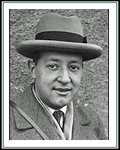 Although the name Heiden is not a
very common one, there are certainly many other branches that
originated in Germany over time. During our research, we have
discovered other Heidens who, as far as we can tell, are not
directly related to us. Some of these people are famous (or
infamous) and we
have also collected information on Heidens in general. Although the name Heiden is not a
very common one, there are certainly many other branches that
originated in Germany over time. During our research, we have
discovered other Heidens who, as far as we can tell, are not
directly related to us. Some of these people are famous (or
infamous) and we
have also collected information on Heidens in general.
For instance, Konrad Heiden (left) was one of the first
journalists in Germany to be critical of the formation of the
Nazi party in the early 1920s. Eventually, he was forced to
flee Germany and finally made it to the U.S. He published
books about the rise of the Third Reich in Germany. Again, as
far as we know, he is not a relative. |
|
|
 |
|
 |
 |
|
|
|

